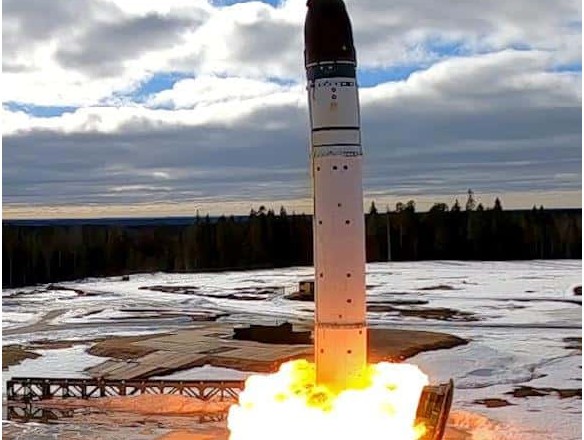On 19 November 2024, Russia officially adopted[1] a new nuclear weapons doctrine announced in last September. The new policy states that Russia could launch nuclear weapons in response to an attack on its territory by a non-nuclear-armed state backed by a nuclear-armed one. While experts debate how novel the doctrine is given similar proclamations in the past, it is important to take the nuclear threat, and the escalatory intent behind it, seriously. President Vladimir Putin has approved updates to Russia’s nuclear doctrine which will lower the threshold for Moscow to launch a nuclear strike against its opponents, prompint the U.S. and Britain to condemn the Kremlin as « irresponsible. » Under the changes, an attack on Russian soil by a non-nuclear power could be grounds for nuclear retaliation if Russia’s opponent was backed by a nuclear-armed state. This is widely seen to be a reference to Ukraine and its Western allies. The document outlines a wider range of contingencies that might trigger nuclear weapons use, especially in regard to non-nuclear weapons threats to Russia and its allies, and appears to lower the threshold for nuclear use.
The revised nuclear doctrine includes language asserting that Russia “reserves the right” to use nuclear weapons not only in response to a nuclear attack, but also to respond to a conventional weapons attack that creates a “critical threat” to its “sovereignty and territorial integrity” or to that of Russia’s ally, Belarus. The previous version of Russia’s nuclear weapons doctrine, issued in 2020, reserves the right to use nuclear weapons if an attack on Russia threatens “the very existence of the state.” The new document, titled “Fundamentals of the State Policy of the Russian Federation in the Field of Nuclear Deterrence,” states that Russia considers “nuclear weapons as a means of deterrence, the use of which is an extreme and necessary measure, and is making all necessary efforts to reduce the nuclear threat and prevent the aggravation of interstate relations that could provoke military conflicts, including nuclear conflicts.”
The revised policy also states that Russia may use nuclear weapons in the event there is “reliable information on the launch of ballistic missiles attacking the territories of the Russian Federation and/or its allies” or “the use by the enemy of nuclear or other types of weapons of mass destruction on the territory of the Russian Federation and/or its allies, on military formations and/or facilities of the Russian Federation located outside its territory.” As a result, the master of the Kremlin explained that massive strikes on Russia from drones, cruise missiles and other aerial delivery systems would eventually involve the use of nuclear weapons in response. Worse still, the country reserves the right to consider a strike on a nuclear-armed state supporting the aggressor. This update of Russian doctrine is aimed above all at the few Nato member countries that have nuclear weapons, notably France. They could therefore be targeted, even if they have not threatened Russia militarily.
On November 20 and 21, Joe Biden and Kern Stammer authorized Ukraine to use ATACMS and Storm Shadow missiles capable of reaching 300 km to strike Russian territory. The official motivation for this decision was reportedly to dissuade North Korea from sending more troops, and to derail the Russian counter-attack at Kursk, which was bearing fruit after a strange delay. And even France, which has already supplied long-range missiles to Ukraine, has declared that allowing Kiev to strike military targets in Russia, or even to send a European ground force, remains an option on the table. For his part, Russian President Vladimir Putin felt that, since Ukrainian forces could not use Western missiles on their own, they had to be supported by military specialists from supplier countries (USA, Great Britain, etc.) to insert the intelligence data needed for targeting. This led to Vladimir Putin’s decision to retaliate “appropriately” by testing an “Oreshnik” RS26 intermediate-range hypersonic missile (IRBM). Designed to carry 6 nuclear warheads, this missile, launched with simple conventional explosives, was tested and used as a warning of Moscow’s ability to target with nuclear weapons or not – and over a distance of 5500 km – any point in Ukraine and any Western capital.
Read more on May 1st, 2025.
[1] Reuters- « Putin issues warning to United States with new nuclear doctrine » By Guy Faulconbridge and Anton Kolodyazhnyy. November 20, 2024 1:20 AM GMT+1. https://www.reuters.com/world/europe/putin-issues-warning-us-with-new-nuclear-doctrine-2024-11-19/
